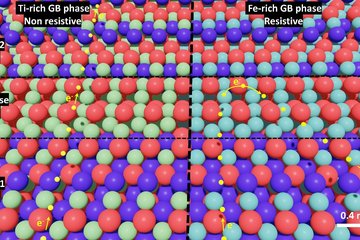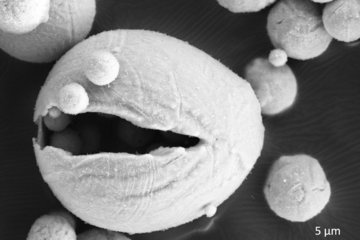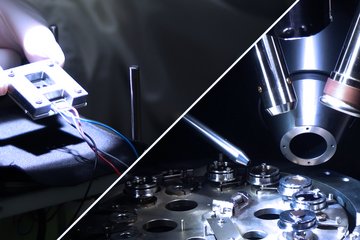2D MXenes guided by 3D Atomic-Resolution Tomography
In order to develop more efficient catalysts for energy conversion, the relationship between the surface composition of MXene-based electrode materials and its behavior has to be understood in operando. Our group will demonstrate how APT combined with scanning photoemission electron microscopy can advance the understanding of complex relationships between surface structure, surface oxidation state, surface composition and sub-surface regions, and performance of 2D materials.
The efficiency of devices for green energy conversion, i.e. fuel cells and electrolyzers for hydrogen generation, is dependent on catalysts, materials that accelerate the rate of desired chemical reactions. The catalytic sciences are undergoing a revolution as scientists are pushed to focus on improving durability and reducing price rather than just maximizing activity. Such benchmarks are only achievable by the discovery of new materials and establishing processing-structure-property relationships at the atomic scale. MXenes, discovered in 2011, are the latest and least understood two-dimensional (2D) materials. They derive their name from their parent Mn+1AXn (“MAX”) phases where M is an early transition metal, A is an A-group element, X is carbon and/or nitrogen, and n = 1–3. Recent theoretical papers have predicted the suitability of MXenes as low-cost catalysts for energy applications, but a robust experimental validation of these studies does not exist.
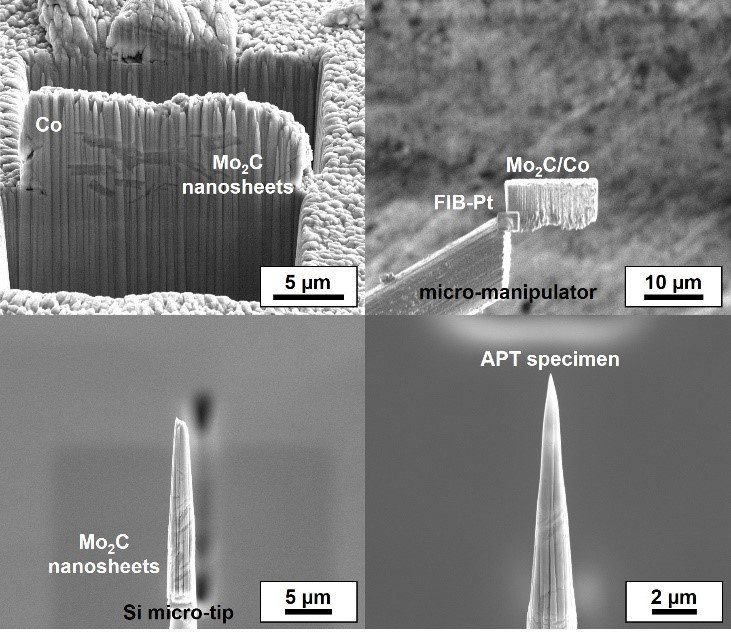
This project is to tailor MXenes for energy conversion applications and extract atomic-scale structural and chemical insights about their stability. Our group collaborate with Prof. Noam Eliaz, Prof. Brian Rosen, Prof. Maxim Sokol at Tel Aviv University and study the mechanisms and physics of hydrogen- and oxygen-induced degradation of the MXene-containing materials, employing electron microscopy, advanced electron backscatter diffraction (EBSD), calorimetric, and spectroscopic techniques, and correlating with APT observations to better understand how to optimize their lifetime.
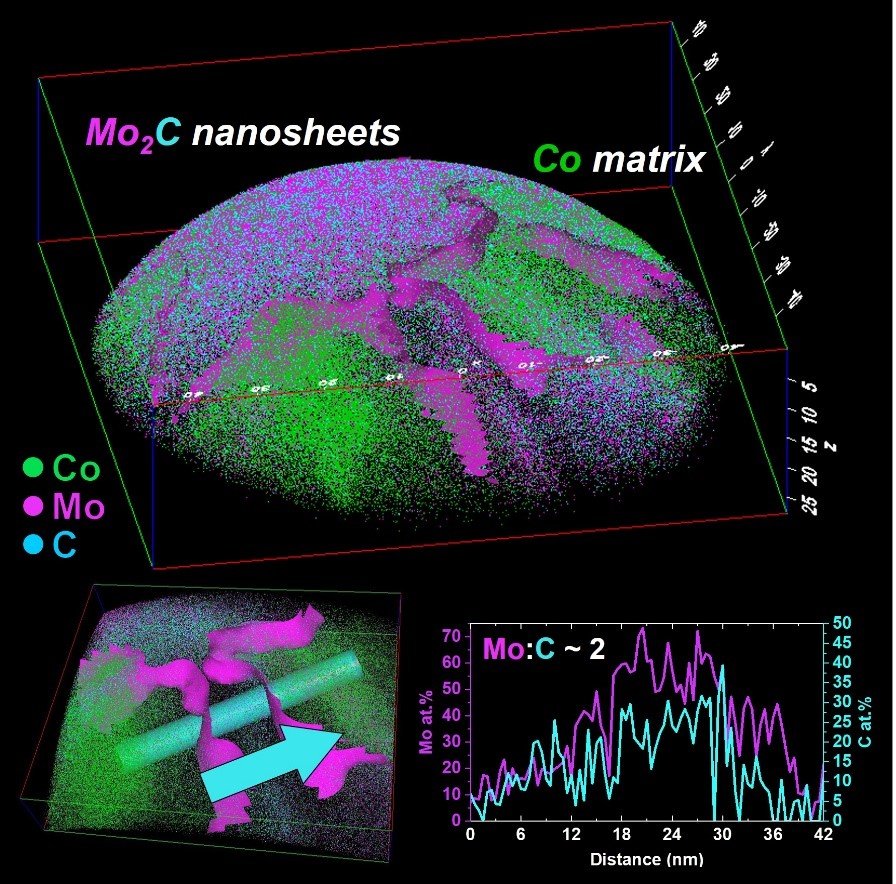
To obtain the APT data, the protocol proposed by Kim et al. is used. The MXene nanosheets are first dispersed in a Co-containing solution. The solution is then placed in a dedicated cell, shown in Figure 1, which allows for performing electroplating onto a metallic substrate. The electroplated material then contains the material of interest, in the current case – the MXenes. Our team will combine processing of a newly discovered class of materials (MXenes) in different ways, with catalytic testing, and state-of-the-art atomic resolution characterization to tackle one of the grand challenges of our generation.






